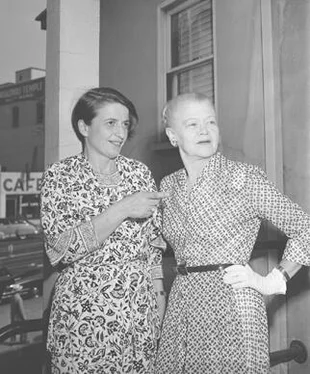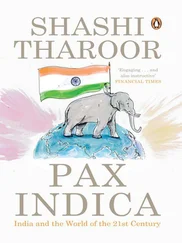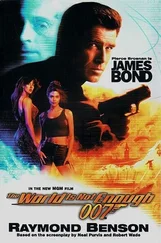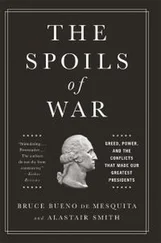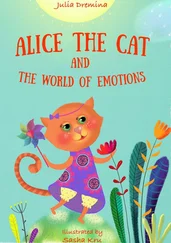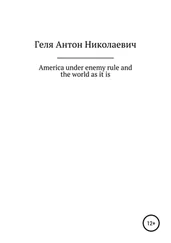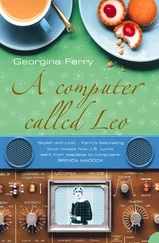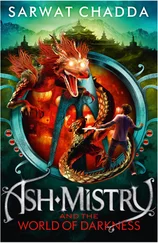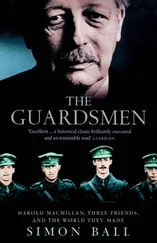Anne Heller - Ayn Rand and the World She Made
Здесь есть возможность читать онлайн «Anne Heller - Ayn Rand and the World She Made» весь текст электронной книги совершенно бесплатно (целиком полную версию без сокращений). В некоторых случаях можно слушать аудио, скачать через торрент в формате fb2 и присутствует краткое содержание. Жанр: Биографии и Мемуары, на английском языке. Описание произведения, (предисловие) а так же отзывы посетителей доступны на портале библиотеки ЛибКат.
- Название:Ayn Rand and the World She Made
- Автор:
- Жанр:
- Год:неизвестен
- ISBN:нет данных
- Рейтинг книги:5 / 5. Голосов: 1
-
Избранное:Добавить в избранное
- Отзывы:
-
Ваша оценка:
- 100
- 1
- 2
- 3
- 4
- 5
Ayn Rand and the World She Made: краткое содержание, описание и аннотация
Предлагаем к чтению аннотацию, описание, краткое содержание или предисловие (зависит от того, что написал сам автор книги «Ayn Rand and the World She Made»). Если вы не нашли необходимую информацию о книге — напишите в комментариях, мы постараемся отыскать её.
Ayn Rand and the World She Made — читать онлайн бесплатно полную книгу (весь текст) целиком
Ниже представлен текст книги, разбитый по страницам. Система сохранения места последней прочитанной страницы, позволяет с удобством читать онлайн бесплатно книгу «Ayn Rand and the World She Made», без необходимости каждый раз заново искать на чём Вы остановились. Поставьте закладку, и сможете в любой момент перейти на страницу, на которой закончили чтение.
Интервал:
Закладка:
Anne Heller
Ayn Rand and the World She Made
For David Harter de Wees
Alas, that you would understand my word: “Do whatever you will, but first be such as are able to will.”
Thus Spake Zarathustra, 1885
PREFACE
Ayn Rand died in her Murray Hill apartment in New York City in 1982, at the age of seventy-seven. Although she had spent her last thirty years as a familiar presence in the city where I lived, offering lectures and readings, I never met her. With no particular evidence, I assumed that her best-selling novels, The Fountainhead and Atlas Shrugged (the only ones I knew about), were potboilers or propaganda. They certainly had an eerie effect on some of my acquaintances who read them and who began to talk about “the earned and the unearned,” “free markets and free minds,” and an individualist hero named John Galt. Besides, in the 1970s, when I moved to New York, I was busy reading E. L. Doctorow, J. M. Keynes, and Little Magazines.
Hence, unlike most of Rand’s readers, I came across her books not as a young person but in my forties, while working as an editor on a financial magazine. A contributor, Suze Orman, showed me the two-thousand-word text of Francisco d’Anconia’s famous “money speech” from Atlas Shrugged . “So you think that money is the root of all evil?” the capitalist hero Francisco asks a group of New Deal—style lobbyists and bureaucrats. “Have you ever asked what is the root of money?” Rand’s answer, in part, is that money is the “tool and symbol” of a society built on mutual, voluntary trade rather than forced labor, duty to the state, or war. It is an engine of economic progress. “But money is only a tool,” she writes. “It will take you wherever you wish, but it will not replace you as the driver. It will give you the means for the satisfaction of your desires, but it will not provide you with desires.” Orman appended a note: This was exactly what she was trying to say in the essay I was editing.
The passage surprised me by defending limitless wealth in a way that was logical, original, complex, and, though somewhat overbearing, beautifully written. I learned that Rand had often presented this long passage as a test of intelligence and literary acumen to potential new disciples, including her most famous follower, Alan Greenspan. I went on to devour her novels and, later, to read her speeches, essays, letters, journals, screenplays, and theatrical plays. (A complete list of her published works appears in the Selected Bibliography.) I became a strong admirer, albeit one with many questions and reservations.
Although Rand is rarely taught in universities, new readers, most in their teens and twenties, have always found their way to her books. Together The Fountainhead (1943) and Atlas Shrugged (1957) have typically sold more than 300,000 copies a year, easily making them the equivalent of best-sellers. Recently, in the midst of a financial crisis greater than any since the Great Depression—the proximate setting of Atlas Shrugged —sales of her last and most ambitious book have nearly tripled. More than thirteen million copies of the two books are in print in the United States.
Because most readers encounter her in their formative years, she has had a potent influence on three generations of Americans. Her controversial themes and racy romantic scenes made her famous in the 1940s and 1950s. She attracted a youthful right-wing following in the 1950s and 1960s and became the guiding spirit of libertarianism and of White House economic policy in the 1970s and 1980s. In a 1991 survey jointly sponsored by the Library of Congress and the Book-of-the-Month Club, Americans named Atlas Shrugged the book that had most influenced their lives (second only to the Bible). When the Modern Library asked readers in 1998 to name the twentieth century’s one hundred greatest books, Atlas Shrugged and The Fountainhead were numbers one and two on the list; Anthem and We the Living were numbers seven and eight, trumping The Great Gatsby, The Grapes of Wrath , and Ulysses . Her defense of radical individualism and of selfishness as a capitalist virtue has won her scores of contemporary public champions, including former SEC chairman Christopher Cox, congressman and 2008 presidential contender Ron Paul, Libertarian Party founder John Hospers, Wall Street Journal editorial writer Stephen Moore, Alan Greenspan, and even Chris Matthews, MSNBC news commentator and former chief aide to liberal congressman Tip O’Neill. Forbes and Fortune regularly mention her as a heroine of young Silicon Valley entrepreneurs, game theorists, and chess masters. Yet she has stood outside the pale of respected American literary practitioners and social critics, and a quarter century after her death most readers of her novels know little about her.
Rand was Russian by both birth and temperament. Born into a bourgeois Jewish family during the reign of Czar Nicholas II, she was twelve years old when the Bolshevik Revolution overturned her native city, St. Petersburg, and caused her family to flee south, newly impoverished and hungry. Although her characters and themes have always impressed readers as being distinctly American, it was her hatred of Russian tyranny that underlies her best and most famous work. Her followers have often proclaimed that she was born an American in spirit and was merely trapped during her formative years in a dark and alien Slavic land. I have tried to document how Russian and Jewish culture and history color some of the most interesting features of her character and work.
Rand immigrated to America from Soviet Russia in 1926, without much English, to pursue a career in writing. Her early years in America were hard, but not as hard as she later claimed they were. “No one helped me, nor did I think it was anyone’s duty to help me,” she wrote in an afterword to Atlas Shrugged . In fact, many people helped her. I have tracked her relationships with a variety of helpmates and with the influential thinkers and writers of her time.
Rand wanted to be the architect of an American utopia that looked backward to the gilded age of American industrial titans. But like many of her Russian predecessors, she was a far shrewder social critic than she was a visionary. As a deconstructionist of liberal American economic and political assumptions, considered against a background of twentieth-century Russian history, she displayed breathtaking insight and remarkable courage. Whatever one thinks about her positive program of rational selfishness, egoism, and unregulated capitalism, her ability to spot and skewer cowardice, injustice, and hypocrisy is at least as keen and passionate as that of her ideological opposite Charles Dickens.
Like Dickens, Rand’s art is the art of melodrama. At heart, she was a nineteenth-century novelist illuminating twentieth-century social conflicts. Her novels and the best of her essays are well worth reading now, when issues of wealth and poverty, state power and autonomy, and security and freedom still disturb us.
———
Because I am not an advocate for Rand’s ideas, I was denied access to the Ayn Rand Papers at the Ayn Rand Institute in Irvine, California, where copies of her unpublished letters and diaries, calendars, photographs, and other documents reside. Nevertheless, I have been able to add much that is new to the record of her life. An exhaustive search of Russian government archives by a Russian research team yielded fascinating new information about her parents’ and forebears’ limited freedom as Jews in the anti-Semitic Russian empire, about her formal education in St.
Читать дальшеИнтервал:
Закладка:
Похожие книги на «Ayn Rand and the World She Made»
Представляем Вашему вниманию похожие книги на «Ayn Rand and the World She Made» списком для выбора. Мы отобрали схожую по названию и смыслу литературу в надежде предоставить читателям больше вариантов отыскать новые, интересные, ещё непрочитанные произведения.
Обсуждение, отзывы о книге «Ayn Rand and the World She Made» и просто собственные мнения читателей. Оставьте ваши комментарии, напишите, что Вы думаете о произведении, его смысле или главных героях. Укажите что конкретно понравилось, а что нет, и почему Вы так считаете.
